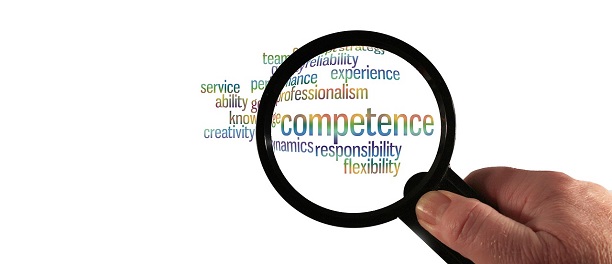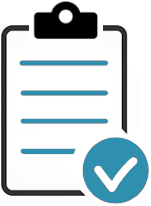A critical factor in any organization is employee competence; ISO 14001 requires that personnel doing the work under organization’s control are competent to undertake the task.
Contents
Who? This includes employees, contractors, external personnel, and working visitors.
Where? Working either on-site or off-site.
Our Competence & Awareness Procedure is proven to work.
The organization is required to take action and the competence raised to the required level.
This may include training, recruitment of a new employee or the use of external contractors.

1. Identification of employee training needs is typically the first step in developing a competency-based training programme.
In addition to existing workers, new hires, temporary workers and outside contractors must be included when identifying training needs. Your organization must demonstrate that the training needs for these employees were identified.
2. After developing a list of these employees, the management representative or human resources manager should establish the appropriate training programme for each person based on the type of employee interaction with each significant impact or risk.
Even though some personnel may have the same job, the type or level of training may vary according to each person’s past education, training, and experience.
3. A register containing information on specified levels of education, training, and experience must be established for each employee whose work is involved with any significant impact.
The planned training programme for each individual then should be listed.
Each new employee receives ‘New Employee Orientation’.
Training is most effective when conducted before employees are assigned to a job or task and when changes in job assignment or tasks occur. Where a risk assessment identifies that training is required as part of the risk mitigation, training is provided before the process or activity begins.
The capability of an employee to meet the requirements of the job description and perform the tasks for which the employee was originally selected are deemed competent. Anyone deemed as being not yet competent to undertake their tasks safely must have an appropriate level of supervision.
On initial start with your organization, permanent employees are assessed by their Departmental Manager or Line Manager after the induction programme has been completed and the employee is assigned a work area, their skill levels are determined and recorded on the Departmental Competency Matrices.
On initial start with your organization the Departmental Manager or Line Manager will establish skills levels after the induction programme has been completed and the Temporary Employee is assigned a work area. Temporary production personnel that affect product quality (conformity) are provided with immediate training on the essential safety, quality and health issues by their Line Manager. This is documented in the temporary employee’s training file.
Line Managers and Supervisors who engage contractors are responsible for providing a local area induction and ensuring that the contractors are provided with information about potential known hazards of the environment in which they work. Records of contractor’s competency or licenses, their induction retained.
Employees who are hosting visitors must inform those visitors about emergency procedures. Event organizers must make information about safety available to anyone attending events on your organization’s premises. This covers emergency procedures and any other hazard-related information specific to that event. Provision of the information can be achieved by a number of methods.
Our Competence & Awareness Procedure is proven to work.
Training should:
Training options may be as simple as on-the-job training, administered by senior/experienced members; formal training, including classroom instruction; training provided by external consultants.
For some situations, commercially available training courses may be another alternative.
Additional or customized training activities specific to individual needs, job descriptions, regulations and goals may be necessary pending the significant impacts and the existing skill level of each employee.

Training records are maintained as evidence of training delivery and assessment of competence.
Documenting the training is critical to ensure you can demonstrate to an auditor the competency levels of each member. This will also increase the responsibility of each member concerning the EMS.
In some sectors regarding the EMS, essential personnel records need to be stored for decades in the unfortunate event of a disaster. In the mining sector, for example, it is called 'cradle to the grave.' From inception until its end so that liabilities can be determined.
Our Competence & Awareness Procedure is proven to work.
Updated: 26th February 2022
Author: Richard Keen

Richard is our Compliance Director, responsible for content & product development.
But most importantly he is ISO's biggest fanboy and a true evangelist of the standards.
Learn more about Richard

Don’t Try to Manage It All Alone!
Our ISO Auditors and Quality Manager Trainers have been in this industry for years, and since 2002 we’ve been providing thousands of small businesses and large corporations with the tools they need to get certified.
Instead of trying to create everything you need to follow this process from scratch, use ours. We have procedures, templates, checklists, process maps, forms and gap analysis tools to help you control your documented information without missing a single input or output.
Before you invest all the hours reinventing the wheel, before you spend countless dollars outsourcing the task — try our templates.
| QMS ISO 9001 |
EMS ISO 14001 |
OH&S ISO 45001 |
|
|
Competence & Awareness Procedure The purpose of this procedure is to define your organization’s process for undertaking the necessary actions and responsibilities for ensuring that the competencies needed to meet customer and other external or internal requirements, applicable to our business, are defined and actions are taken to meet these needs. This procedure also defines the responsibilities for planning, reporting and retaining associated records. Forms & Reports also included:
>> Free Download - Control of Calibrated Equipment Procedure - this will give you a good idea of what to expect when you purchase the procedure. |
$19 USD |
$19 USD
|
Pay by Credit Card, Debit Card, PayPal or Apple Pay.


|
Please read our Money Back Guarantee. |
Bought by Small Businesses and Large Corporations our templates have been sold online and CD since 2002.
Used by:
The Templates are used by first-timers following our step-by-step, clause-by-clause guidance documents; and experienced Quality Managers wishing to streamline and improve their existing documentation.
The application of our templates is scalable and generic; regardless of the size and type of organization. The elements that form the quality management system are the same.
1. Our customizable templates save you time and money by offering a streamlined process to create your quality documentation
2. They’ve got everything you need in one simple template
3. Proven to work our templates have helped thousands of businesses big and small achieve certification
4. Documents use styles to make reformatting and rebranding a breeze
5. Our templates are generalizable for any industry or sector. The application of our templates is scalable and generic; regardless of the size and type of organization.